3D-Reconstruction & 3D-Scanning
An increasing part of my work is working with different scan data. Be it so-called photogrammetries for visual purposes (games, movies, gamification). Or high-precision laser scans for industrial purposes or 3D visualization, here the decisive keyword would be the digital twin.
In the end, however all scans in common that they consist of triangles and we 3D artists can create wonderful things from exactly these cute sweet little vertices.
I have prepared a small example here which tries to visualize the topic of 3D-Reconstruction & 3D-Scan.
3D reconstruction refers to the process of creating a three-dimensional representation of an object or scene. This can be done through a variety of methods, including 3D scanning, photogrammetry, or structured light scanning.
In 3D scanning, a physical object is scanned using a 3D scanner to create a digital model of the object’s surface. This can be useful in a variety of applications, including manufacturing, product design, and archaeology. 3D scanning can also be used to create virtual models of objects that are too fragile or valuable to handle, or too large to transport.
Photogrammetry, on the other hand, involves taking multiple photographs of an object or scene from different angles and using software to create a 3D model based on the images. This technique is often used in surveying, architecture, and cinematography.
Structured light scanning involves projecting a pattern of light onto an object and measuring the distortion of the pattern as it reflects off the surface. This allows for the creation of a highly detailed 3D model of the object’s surface.
Once a 3D model has been created through any of these methods, it can be used in a variety of applications, such as virtual reality, video games, product design, and even medical imaging.
Overall, 3D reconstruction is an important field with a wide range of applications, and it is constantly evolving with advances in technology and software.
The Scan Process
To do the First Step, the ice cream cone was sprayed with a special spray powder to prevent the infrared light from penetrating the Scan-Item and to get a Scan with a clean surface. if possible without any noise!
By spaying the article, a clean scan is possible and is now exported accordingly tessellated. (RAW-LaserScan).
The Reconstruction Process
The scan has now been imported and checked for errors. There are a few small spots that can be edited accordingly. For this I have a field-tested and often completed workflow that is basically based on various remeshing & sculpting techniques a proper retopo is usually no longer necessary with Hard Surface models, if you do not really value the edges, these actually come into the model well enough after the bake But if the model has beveld edges, I would always! suggest a retopo, but as in the example here with a rather organic item quite a good remesh perfectly.
For this I mostly use Blender now also a lot for sculpting because this thing in Blender is getting better and better every release. should it become more specific and the algorithms needs more finer and more scalable then I will definitely use Zbrush.
Apart from that and depending on the area of application, the scan must first be prepared accordingly if it is also scanned yourself. For this and also for the really good alignment algorithm, I recommend and use Geomagic Design-X myself. However, it always depends on the purpose of what I want to have in the end and how much time I want to put in a corresponding scan. In this article, however, we always speak of an article that was scanned for visualization purposes! All other workflows would go beyond the scope here.
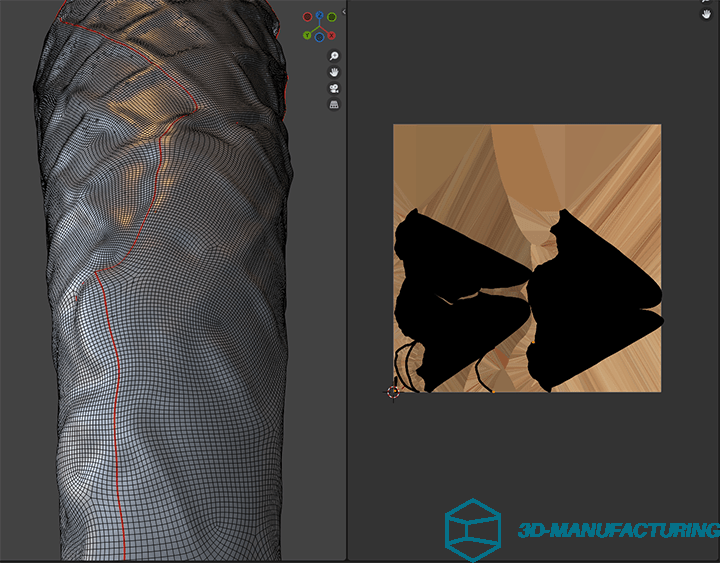
Once the remesh model is finished, be it low or mid-poly, the mesh still needs UVW coordinates, and here too, a little time must be allowed for a good result. A good texel density ratio is important later for the texture. We want to have as many texels as possible in the very limited space. But that again depends on the circumstances. Should the mesh later e.g. to be seen in a digital showroom, the number of textures must also be saved here, since a browser does not have the performance of a full-fledged engine. However, this could change again with new technologies such as WebGPU, the successor to WebGL.
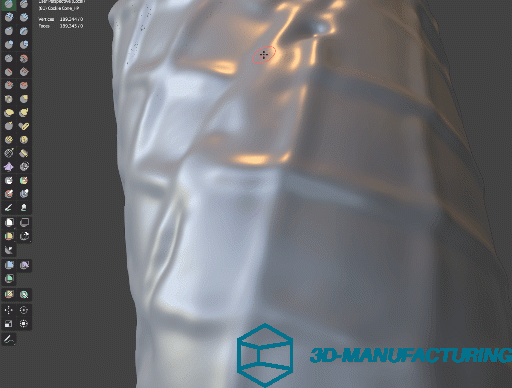
Small errors in the scan can be corrected or emphasized in the sculpting module or software.
The Visual Process
Attached is the final result with two scoops of ice cream, which gives you an appetite and makes you want to go straight to the next ice cream parlour. enjoy your meal 🙂
I designed the two balls of ice in the sculpting module and developed the associated procedural shader.
The PBR textures of the waffle were then created in Substance Painter and exported according to the specifications.
- Albedo
- AO
- Roughness
- Metalness
- Displacement
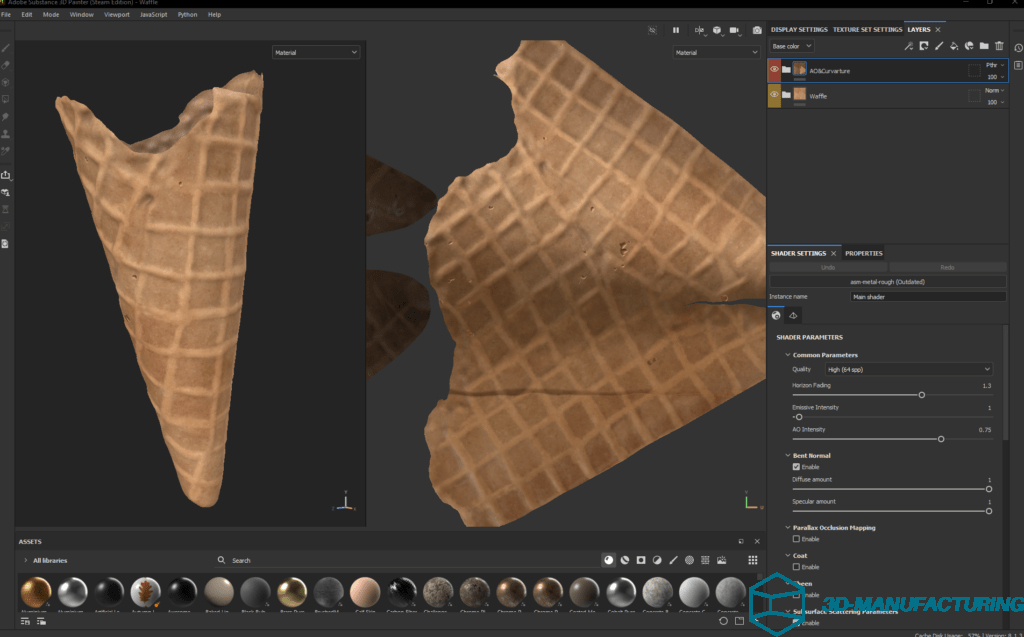
Finally a couple of Iterations during the Process
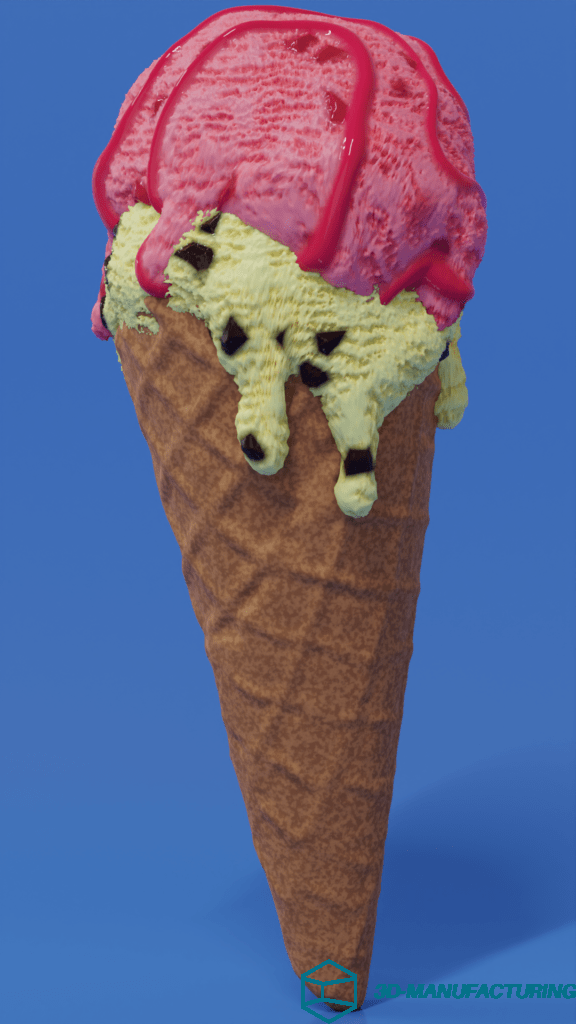
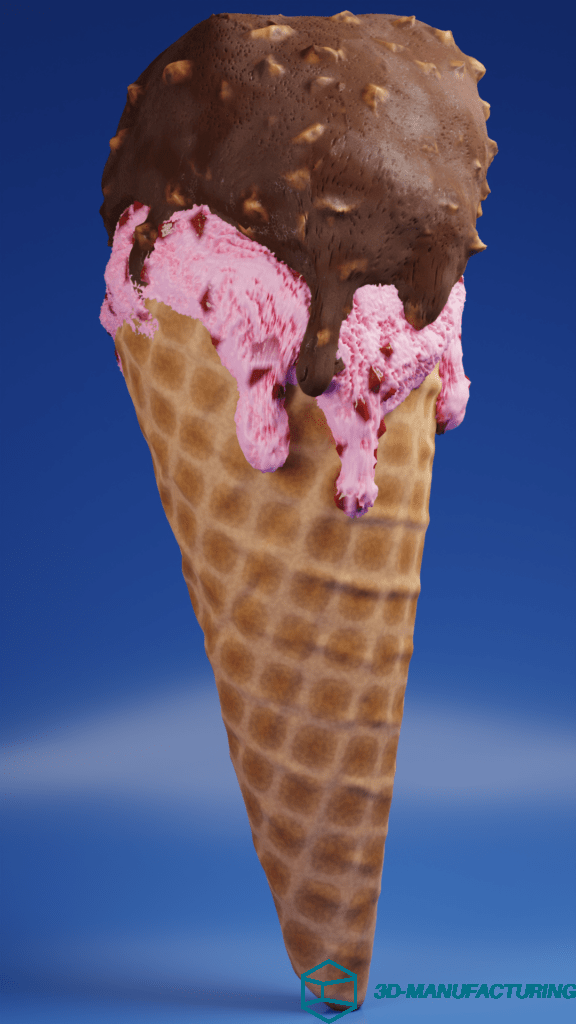
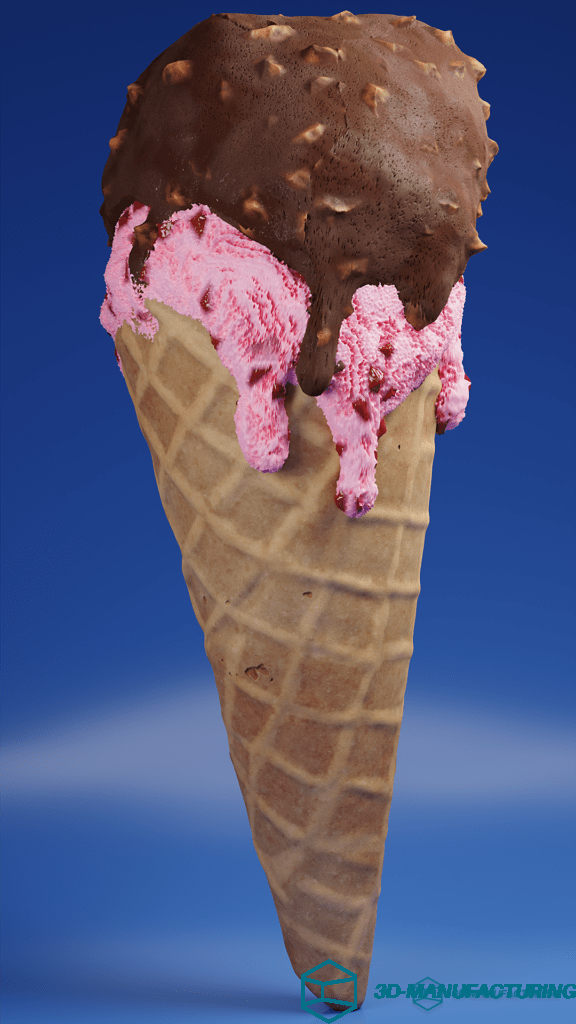
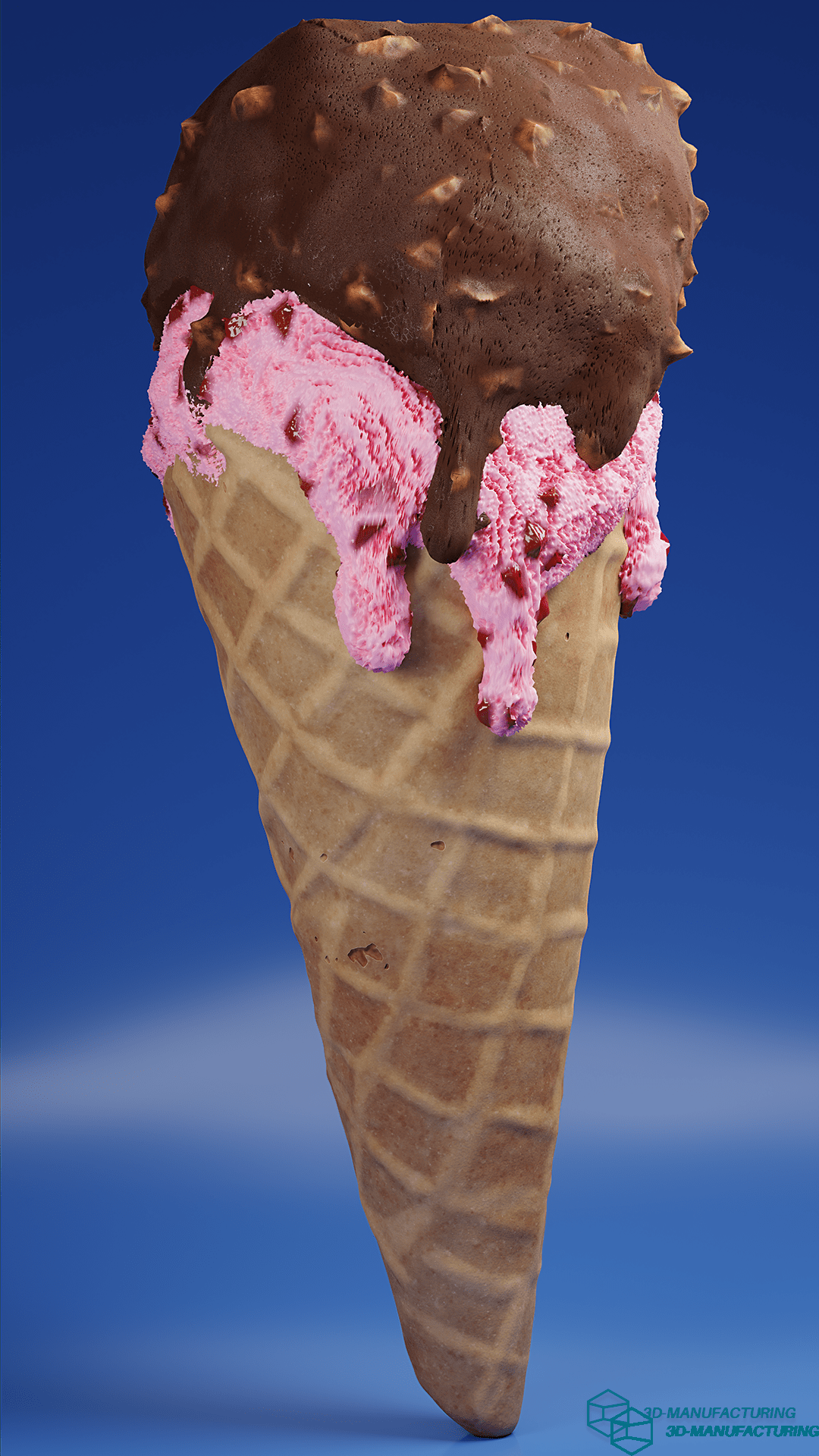
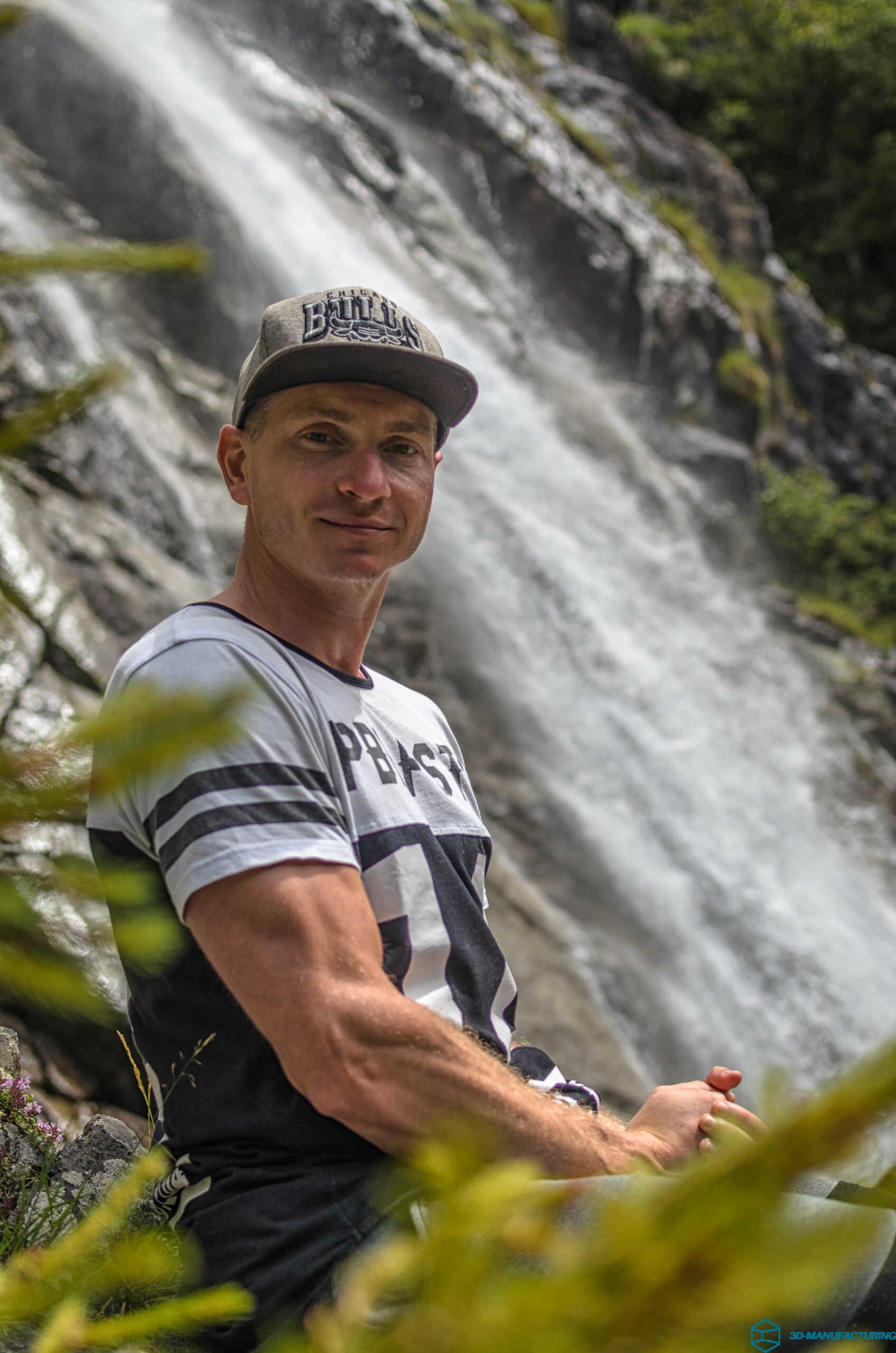
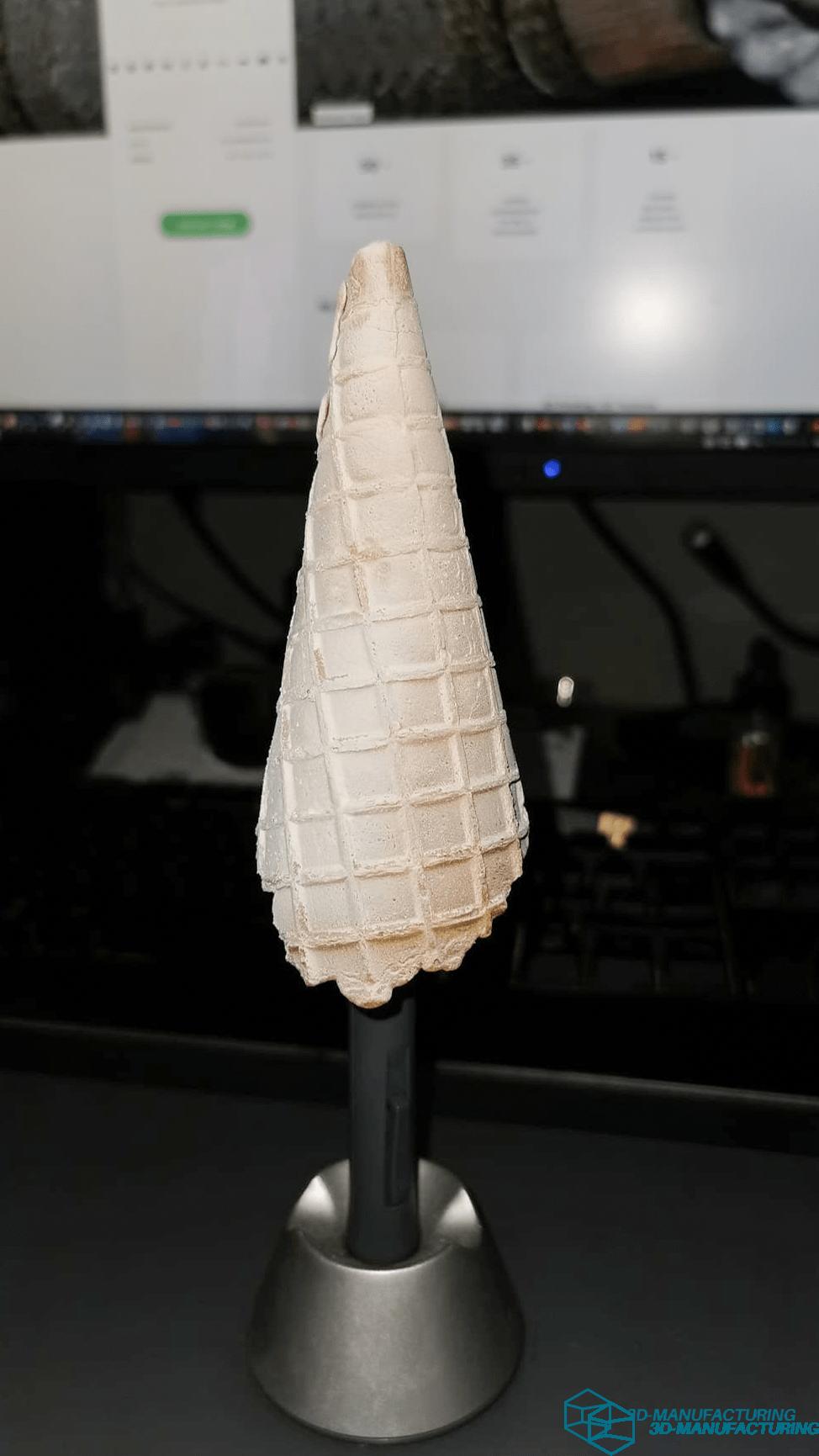
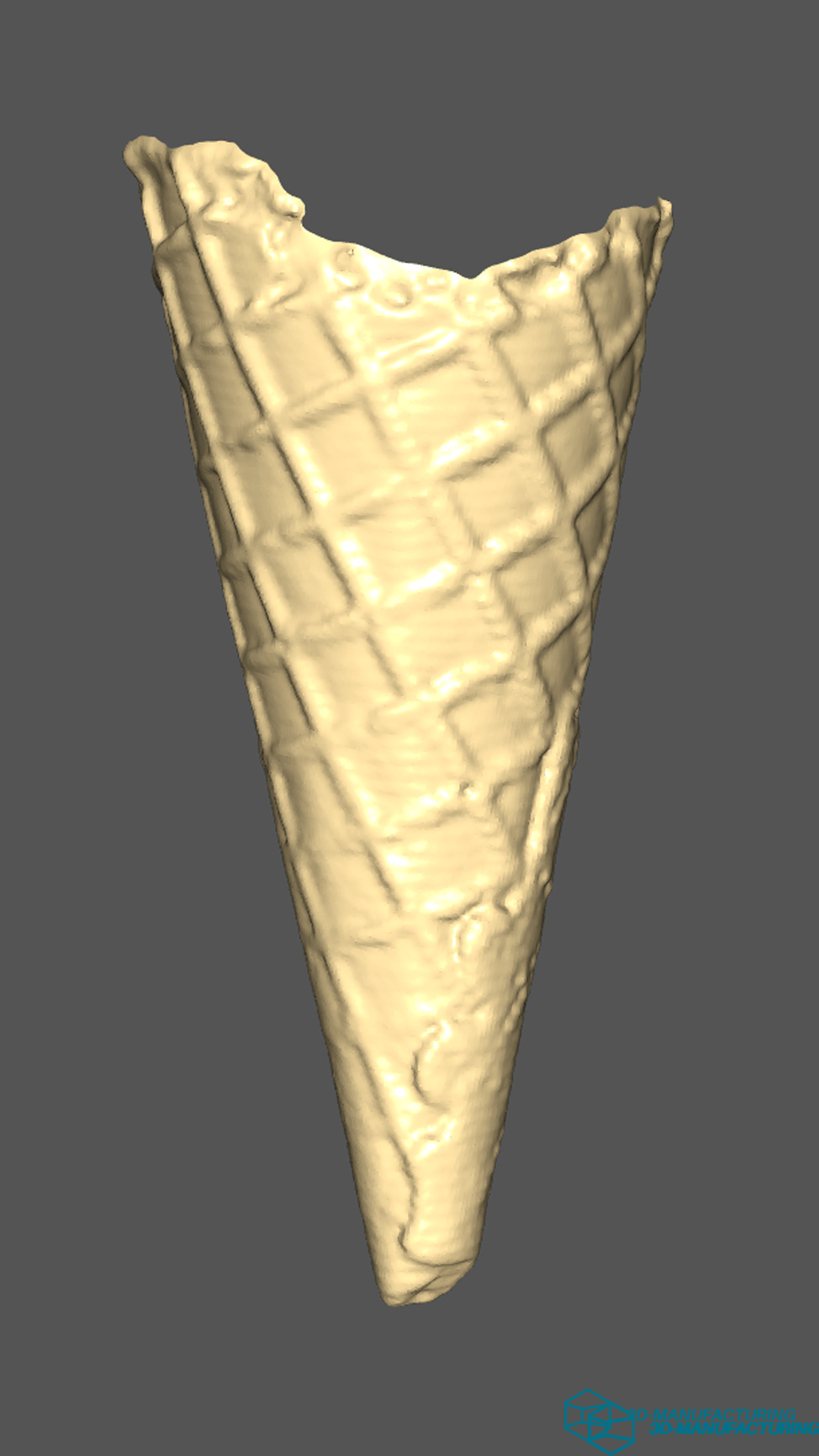
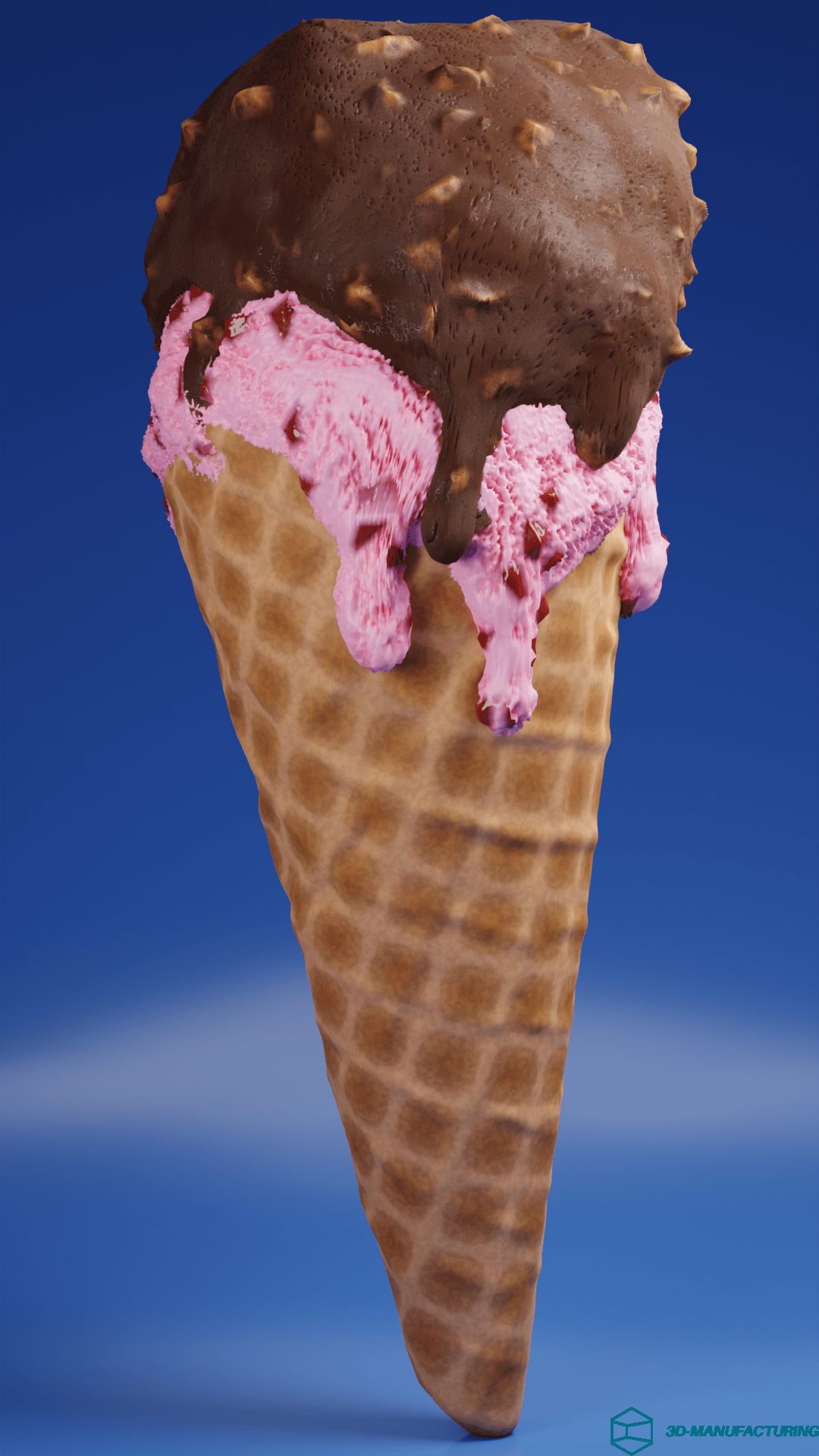
[…] How To Deal With 3D-Reconstruction 3D-Scanning – 3D-Manufacturing.net. 3DManufacturing Newsletter How To Deal With 3D-Reconstruction 3D-Scanning Scroll down Stefan Tägl I`m a 3D-Artist .. Residence:Germany City:Gladenbach Born:in the 80's Contact me 7. Stefan.taegl3d 3D-Reconstruction & 3D-Scanning An increasing part of my work is working with different scan data. In the end, however all scans in common that they consist of triangles and we 3D artists can create wonderful things from exactly these cute sweet little vertices. I have prepared a small example here which tries to visualize the topic of 3D-Reconstruction & 3D-Scan. 3D reconstruction refers to the process of creating a three-dimensional representation of an object or scene. In 3D scanning, a physical object is scanned using a 3D scanner to create a digital model of the object’s surface. […]
Comments are closed.